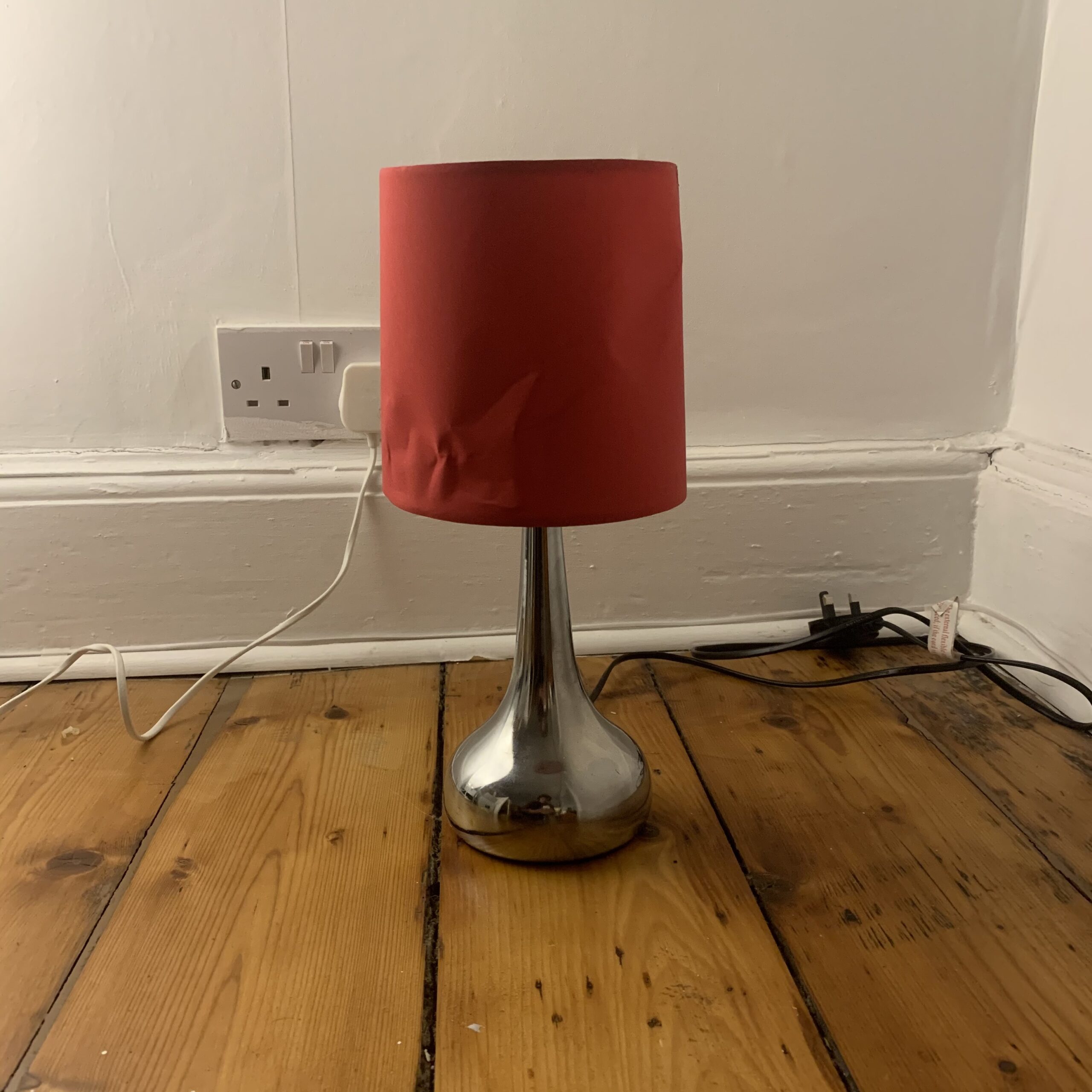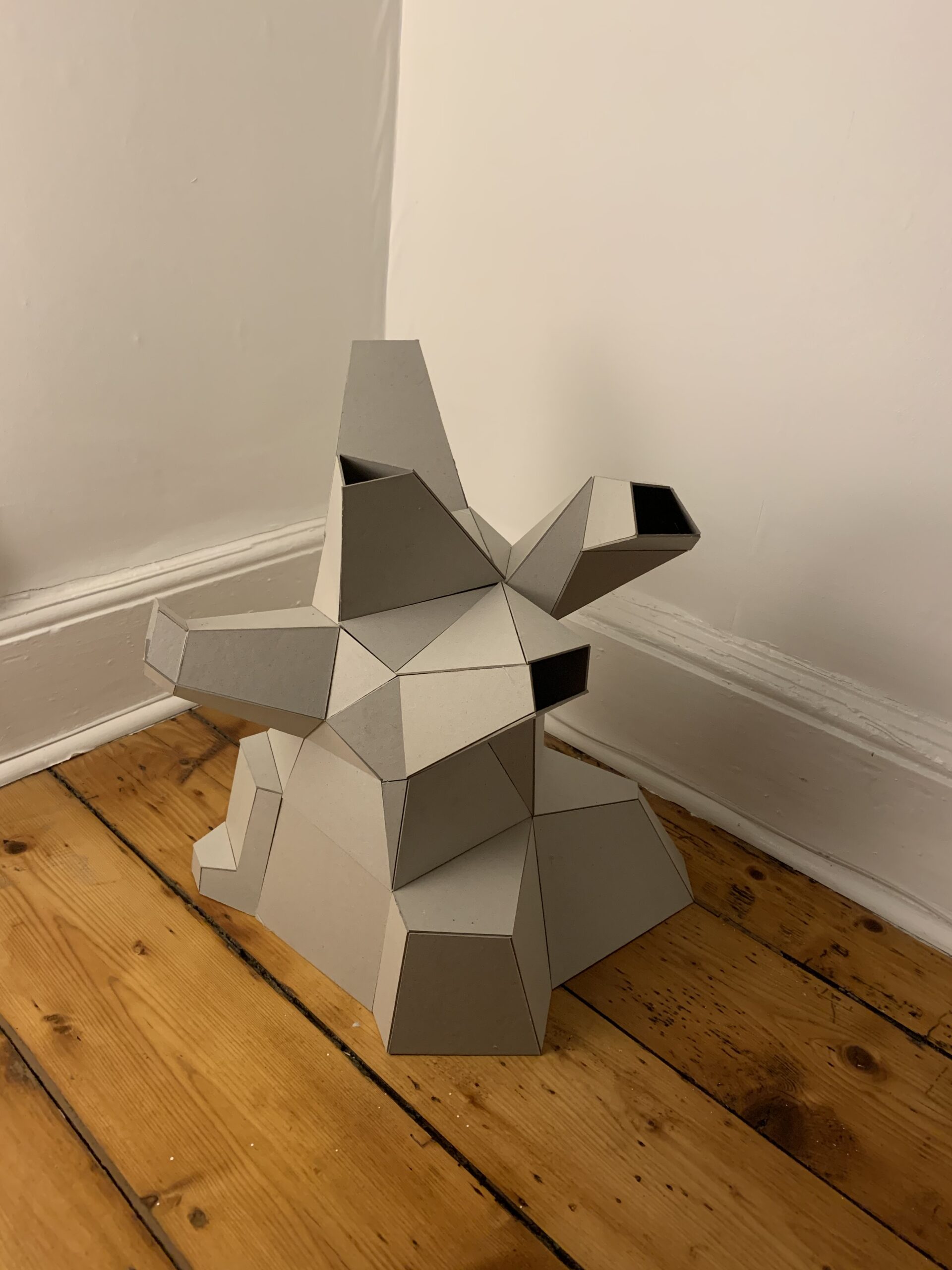LAMPSHADE


In retrospect, this piece isn’t as finely in tune with the found object brief as you would imagine, particularly where the lampshade is concerned. Instead of altering the lampshade itself, I’ve removed it and fashioned a new one altogether. In this context, light itself acts as the found object, altered accordingly through the creation of alternative pathways.
At the beginning, when I was exploring possible ‘found objects’, I was really interested in working with something that I could remove from its natural state, alter and adapt, and then place it, back it where it had been. In doing so, I aim to highlight the role of the object, however mundane that is.
In my case, I chose a rather shoddy bedside light, and through refabricating its lampshade, I aimed to conceive a new and unconventional form, creating new pathways for the light to travel down. The original lampshade, a drum lampshade, is completed in a ductile plastic, wrapped with fabric and held together by two circular wires that form at each end. Light is primarily released from the top and bottom, effectively illuminating the surrounding area, whilst also protecting human eyes from the direct glare of the bulb. In my alteration, it was important that whatever form it would take, it should adhere to these basic principles.
My alteration…
I decided early on that I would create it using modelling card, and that I wanted it to take on a ‘sculptural’ appearance – one that would juxtapose with its original, orthodox form.
To do this I began by cutting an abstract shape, and, one by one, added more pieces together, forming the base to the 3 dimensional structure, and then I started working upwards. Despite being a collection of fragmented geometric shapes, I could see an organic form coming together – one that reflected the tree-like framework. This was not intentional, but I embraced it nonetheless. Over the course of its construction, each shape had to be cut one at a time, often taking measurements mid-air which posed difficulties in ensuring accuracy. As a whole, the process was long and tedious, often having to re-cut shapes multiple times to assure that they could fit together snuggly.
In its finished state, I really like how it turned out. I think it would be interesting to see what it could look like in other materials, and how each of those could/ would affect the ‘experience’. Such materials might include coloured glass, metal or perhaps wood. Technically, with this form completed, replicas could be easily made, taking measurements from the shapes already custom-made.
VIDEO: